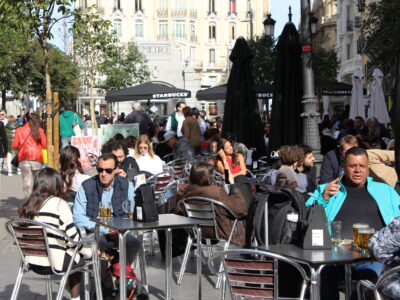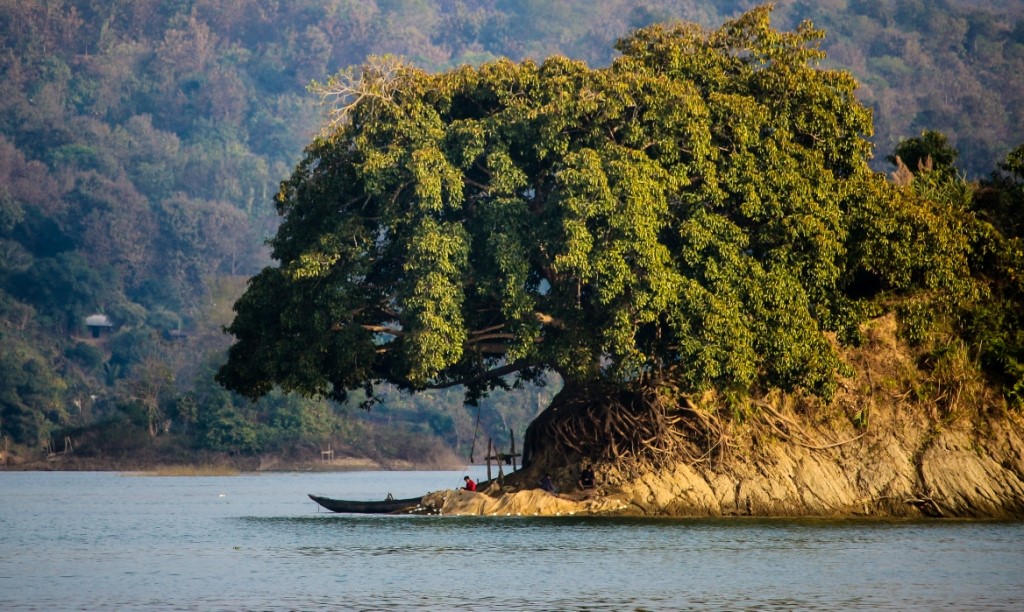
The Chittagong Hill Tracts often shortened as Hill Tracts
The Chittagong Hill Tracts often shortened as Hill Tracts or abbreviated to CHT, are a group of three districts within the Chittagong Division in south-eastern Bangladesh, bordering India and Myanmar. Spread over 13,295 sqkm, the three districts of Rangamati, Bandarban and Khagrachhari are the true blue hidden gems of Bangladesh attracting the attention of international tourists for their breathtaking natural beauty.
Normally tourists looking at Bangladesh as a holiday destination head to Sundarbans to enjoy the dense mangroves and giant Royal Bengal Tigers or to Cox’s Bazaar for its unbroken long beach and beautiful seaside life. But off the beaten track, CHT is a tranquil escape from the chaos of the capital Dhaka or business district of Chittagong or even the crowded sea beaches.
The Shah Amanat International Airport at Chittagong is the entry point and besides domestic services, it is also serviced by several international carriers. From the airport, various types of coach services, as well as private cars, are available to travel to the Hill Tracts areas. Local guides are available, but good drivers are better guides than many.
Bandarban
Bandarban is the most remote district in Bangladesh. The lure of the tallest peaks of Bangladesh treks through virgin forests and the chance to meet more than 15 tribes of the region up and close are growing among the tourists. The River Sangu (also known as Sangpo or Shankha), the only river born inside Bangladesh territory, runs through Bandarban. Tourists enjoy boat tours on the river. Locally known as ‘Swarna Mandir‘, the golden temple, Buddha Dhatu Jadi is the largest Theravada Buddhist temple in Bangladesh, located in Balaghata, four km from the town of Bandarban, an excellent place to visit set atop a 60-metre hill, made completely in the style of any south-east Asian Wat (Buddhist shrine) housing a sacred relic.
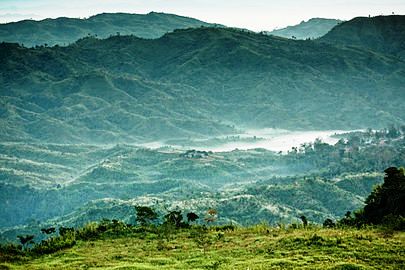
Rangamati
From Chittagong, it is about two and a half hours’ journey by road. At Rangamati, the Chakma King’s residence and nearby monastery are big attractions for tourists as are the Kaptai Lake and the Hanging Bridge on the outskirts. The Kaptai Lake’s average depth is 30 m while its deepest point is 150 m below the surface. The picturesque panoramic structure of the Hanging Bridge on the lake is an iconic landmark of Rangamati town and the most popular tourist spot.
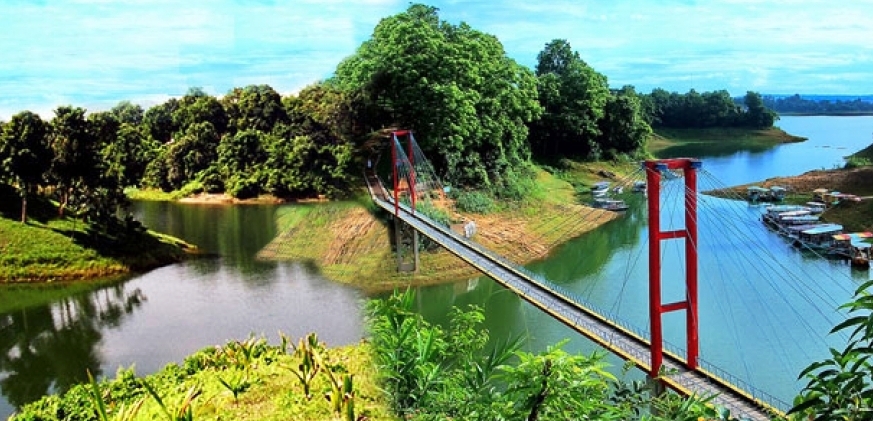
Khagrachhari
Khagrachhari is the third district of Chittagong Hill Tracts in the south-eastern part of Bangladesh, a drive of 112 km from Chittagong, by an all-weather metalled road through the green forest. For the tourists seeking a calm and peaceful holiday, Khagrachhari is an ideal spot. It has three rivers – Chengi, Kasalong and Maini. The unadulterated beauty is the pick of Khagrachhari. Tea gardens dating from the colonial period are also a natural draw for tourists who love to spend time in the hilly tea estates.
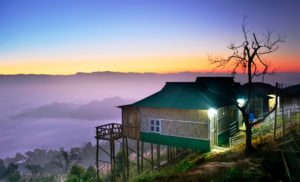
Before making a visit to the Chittagong Hill Tracts, you must have a permit which can easily be obtained at the state office in the city of Chittagong. As you continue your journey to the tracts from the town, you will encounter a few military checkpoints where you must have your permit checked and details added to the registration book. The permit allows you to visit all the three districts. There are decent accommodation arrangements in all the town areas, especially by the official tourism corporation of Bangladesh, Bangladesh Parjatan Corporation (BPC), whose motels and hotels are fairly good. In certain strategically beautiful and scenic tourist places, only BPC has a motel. The cuisine served here has a local flavour of Chittagong hill areas and quite rich in taste and flavour.
The tribal populations of the area include the Chakma, Marma, Tripura, Tanchangya, indigenous Assamese, Keot (Kaibarta), Chak, Pankho, Mro, Murang, Bom, Lushei, Khyang, and Khumi, and they differ immensely from the Bengali majority of Bangladesh with respect to language, culture, ethnicity, physical appearance, religion, dress and farming methods, making it worth a visit. But every tourist must always remember while roaming around in the Chittagong Hill Tracts area, that you do not take photos or videos of local people without asking their permission. And if you manage to get an invitation from one of the tribal families to have lunch with them, then savour the experience and feel honoured.









